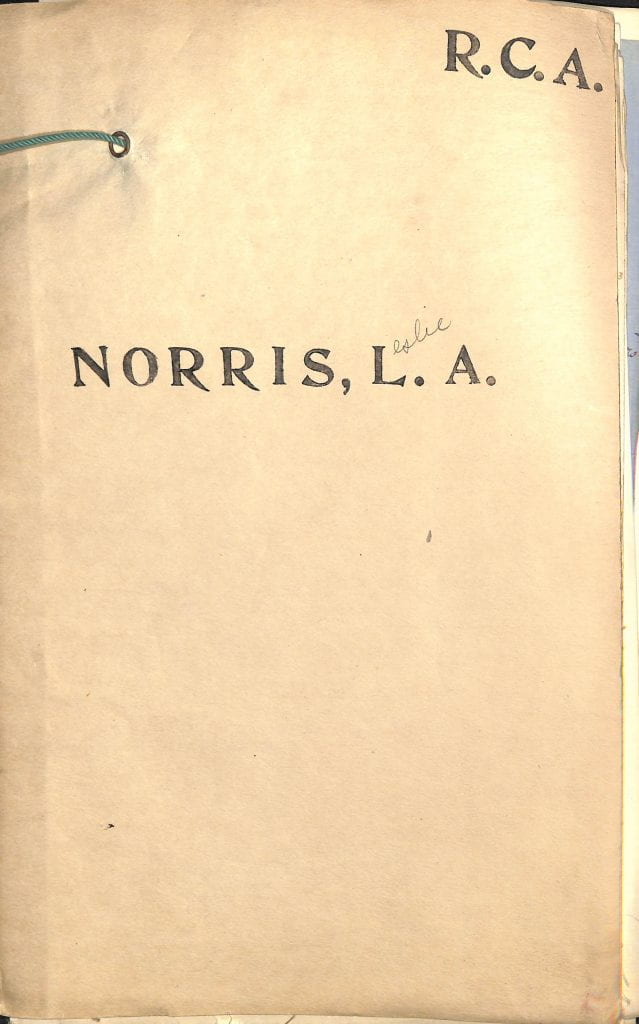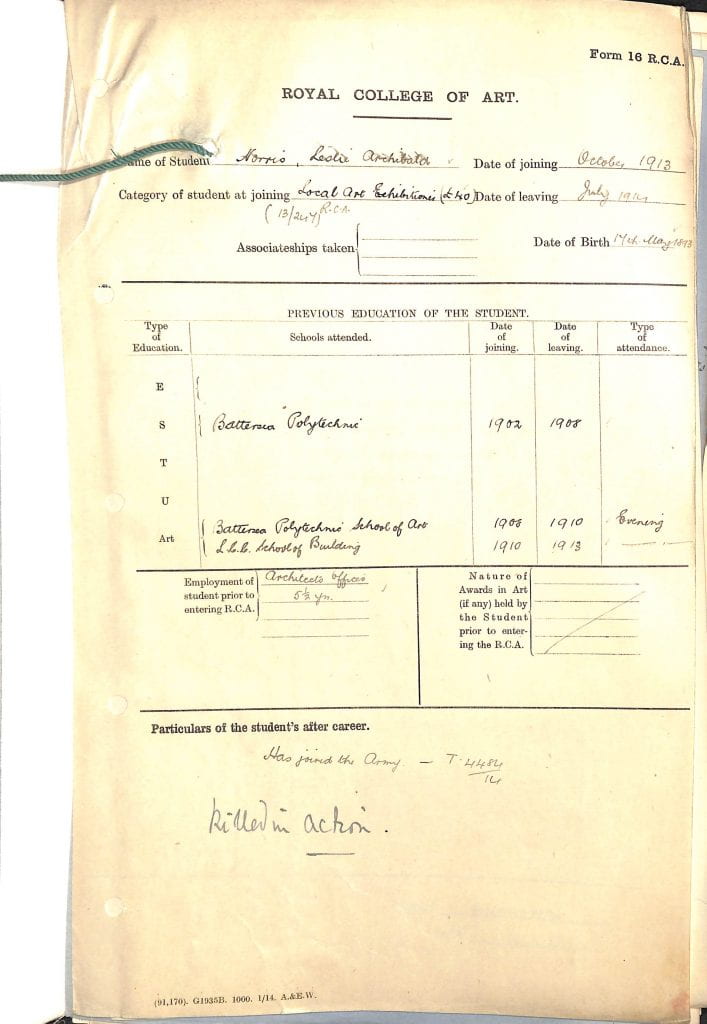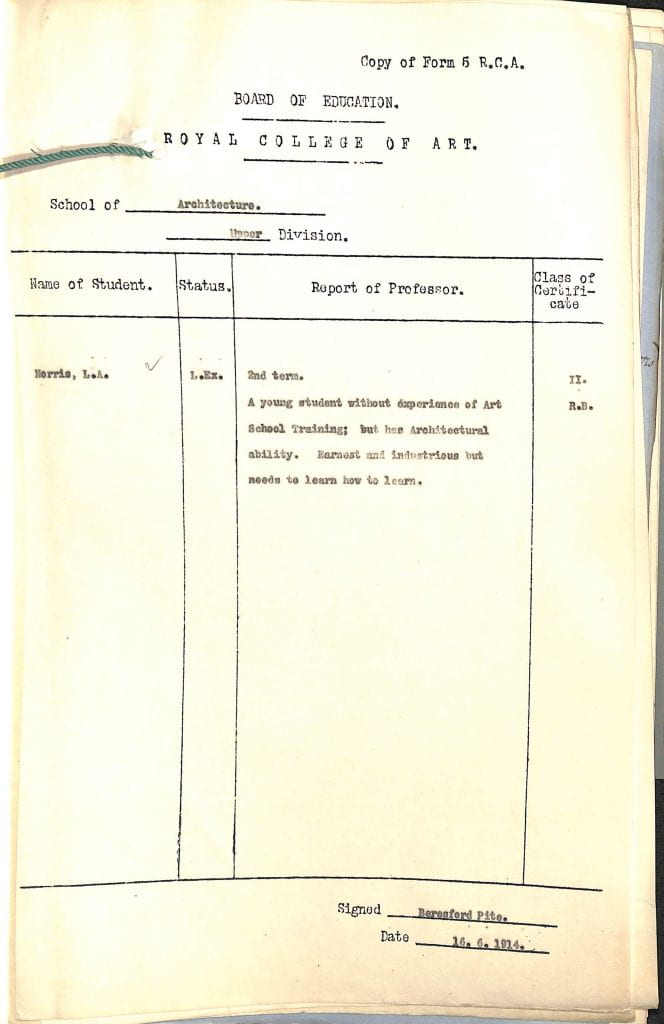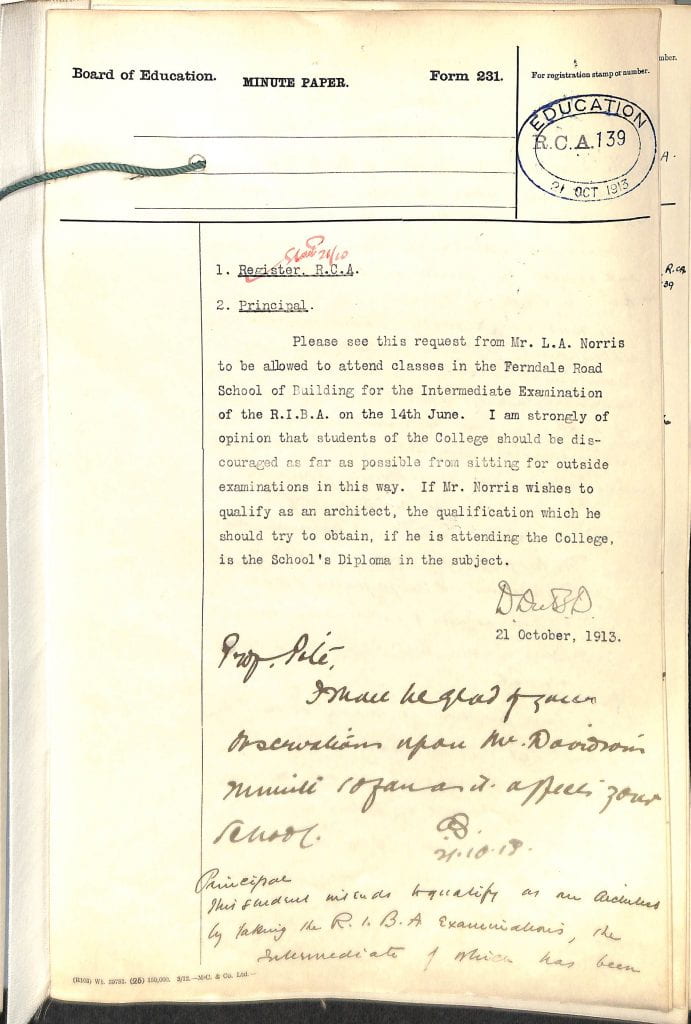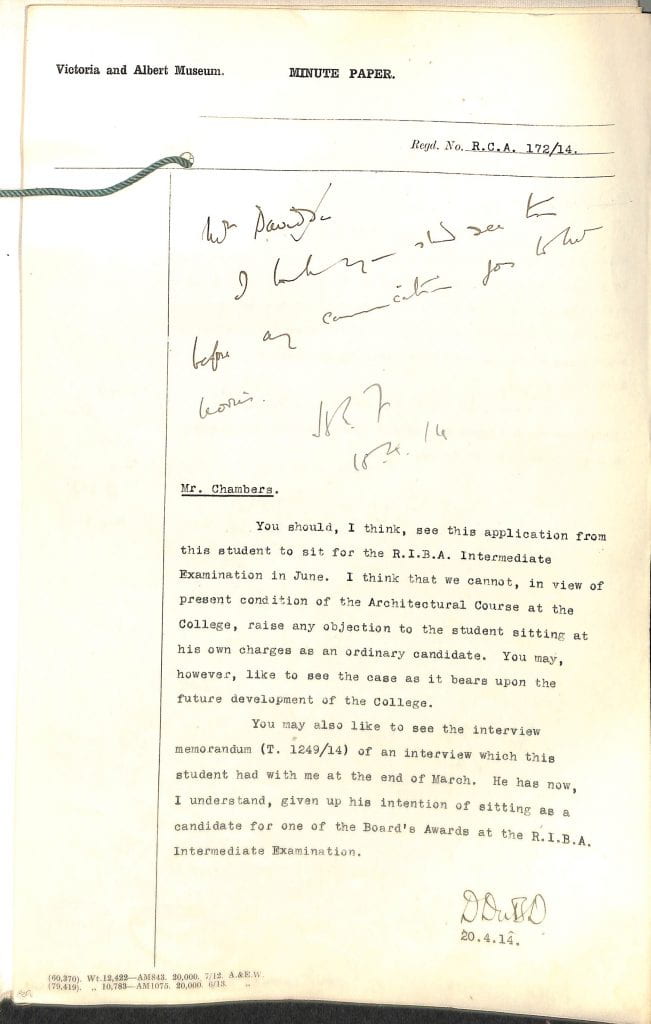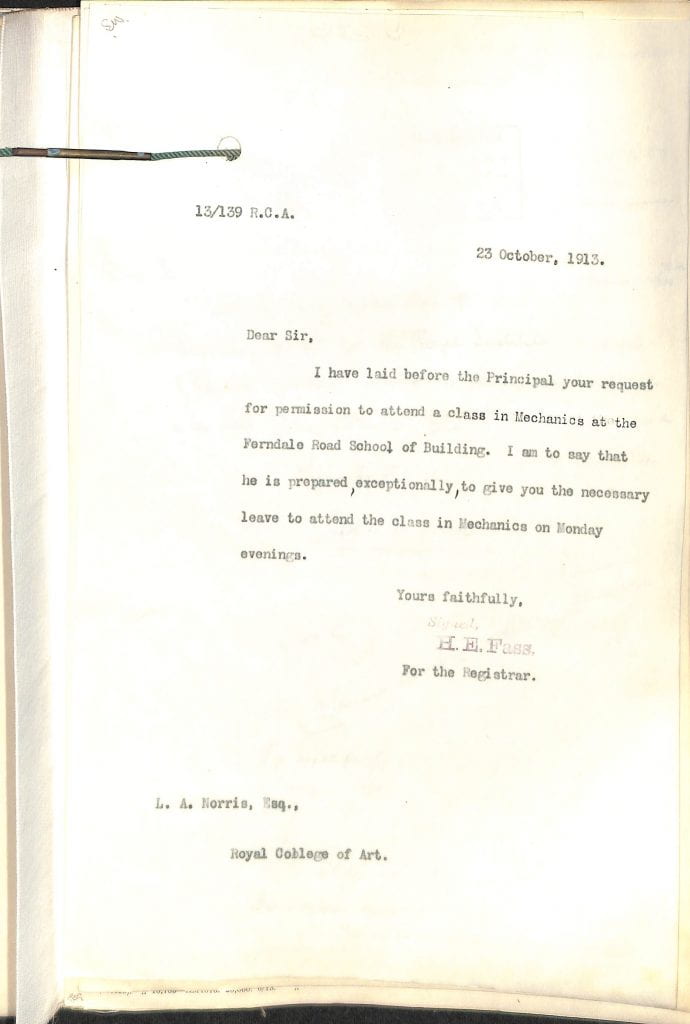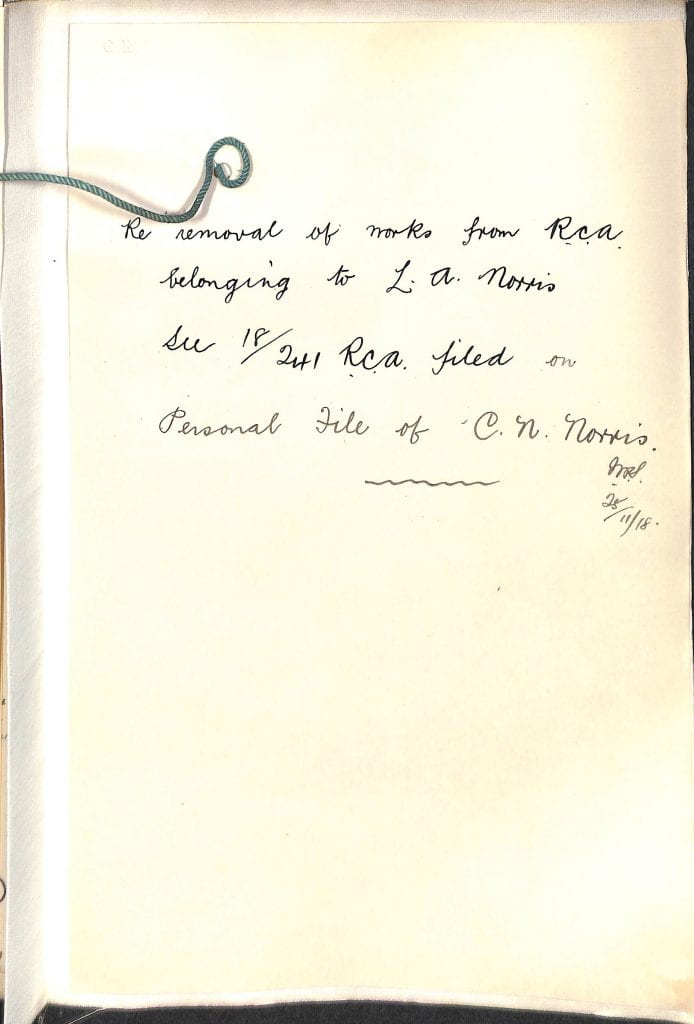Born: 17 May 1893
Died: 25 March 1917
Studied at the RCA: October 1913–July 1914
Before joining his older brother Cyril at the College, Leslie had taken evening classes at Battersea Polytechnic and worked in various London architectural practices. Despite the comment by Professor of Architecture, Arthur Beresford Pite, in Leslie’s file when he first arrived, that he needed to ‘learn how to learn’, records show he was keen to do so, with the professor supporting Leslie’s unusual requests, first to attend some ‘Mechanics’ evening classes elsewhere (as construction was not offered at the College), and later to take an intermediate RIBA exam: he achieved second place in this exam overall, probably helping to calm some of the initial harrumphing from the authorities. In September 1914, however, with equal determination, he and his brother enlisted together, leaving their studies behind them.
At first they both served in the 17th (Service) Battalion of the Royal Fusiliers training at Whyteleafe in Surrey, but by late spring 1915 Leslie was already pushing on, applying for a commission to serve with the Royal Engineers instead. Yet again Professor Pite supported him, with army forms making clear he must have known him before he studied at the College, while the Secretary of Battersea Polytechnic vouched for his technical ability, and letters from a couple of his former employers reveal how well he was liked by them. Inevitably, during the first week of August, Leslie became a Second Lieutenant in the 1/ 2 London Field Company of the Royal Engineers.
Correspondence a couple of years later between the War Office and his father, William (an art master), about the loss of Leslie’s possessions during evacuation from Helles in January 1916 reveal that his first experience abroad was serving in the disastrous Gallipoli campaign. Back in Europe the following summer and preparing for the Battle of the Somme, he appears in the company’s war diary after dry notes about ‘wiring’ new trenches near Beaumont Hamel. An unusually twisty entry – perhaps reflecting Leslie’s own words – provides a not entirely convincing explanation of how he and a couple of other men acquired a large amount of German marking-out tape. At one end of the story is a small ball caught on British wire, its undoubted usefulness, that at least a couple of hundred yards’ worth were begging to be reeled in, and that it had been abandoned. At the other is the fact that the loose end emerged from a nearby ‘empty’ enemy trench and an armed German patrol spotted them. But all ended well, with a blast of machine-gun fire from Leslie’s fellow soldiers saving the day – and the tape. The next time he is singled out is for his important and ‘best’ work with his section north of Gueudecourt in late October. There is no description of this at all. Soon afterwards Leslie was on the move again, returning to England to begin training with the Royal Flying Corps (RFC).
At the time the daring of aircrew was already known to the public, but far less talked about were the RFC’s very high losses – often during training. As a result new recruits were needed in the field almost as soon as they became available. So it was that Leslie was attached to 70th Squadron, based near Amiens, on 1 March, only the day after his appointment as a flying officer. He was to serve as an observer, operating cameras and guns, behind the pilot of a two-seater Sopwith, sent out to recce the German defensive system known as the Hindenburg Line.
The 25 March 1917 sortie may have been Leslie’s first mission, but the danger he was facing must have been entirely obvious. Only the day before the pilot he would accompany, Lieutenant Harry Butler, had returned from a flight with an injured observer and a bullet-ridden plane, having been attacked by far superior German Jasta fighters. That Sunday, Leslie and Harry departed at 7.25 am, some fifteen unexplained minutes after the other Sopwiths in the squadron. They were later reported as last seen over Cambrai at the ‘opening of combat’, then as ‘missing’, and finally as ‘killed’ on the same day – although this was added to records on 13 April.
On receiving this devastating news Leslie’s father wrote immediately to the War Office asking for evidence, as he had information that the plane had gone down over enemy lines. But any remaining hope was dashed when the bodies of Harry and Leslie were retrieved (presumably identified somehow) in May and buried at Beugny, south of Arras.
Records show that the only crew to survive from the squadron that day had been forced to return early due to a fault with their aircraft. The months of March and April 1917 were the nadir for the RFC, with Leslie’s death contributing to notorious statistics showing their pilots and crew were lucky to survive more than a few weeks on active service, or even a matter of minutes when combat flying.
Both Leslie and Harry were reburied at Lebucquiere Communal Cemetery Extension, Pas-de-Calais, France.
